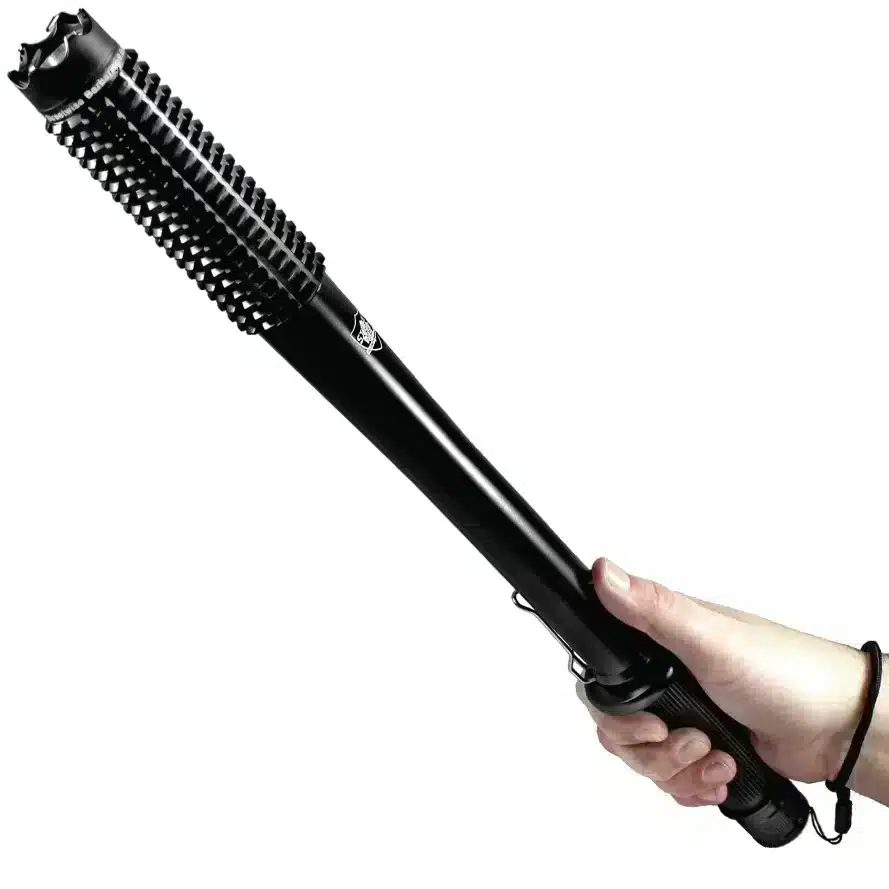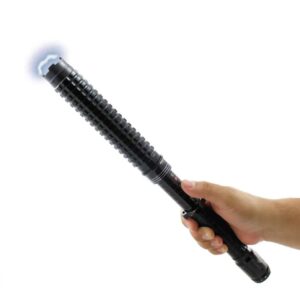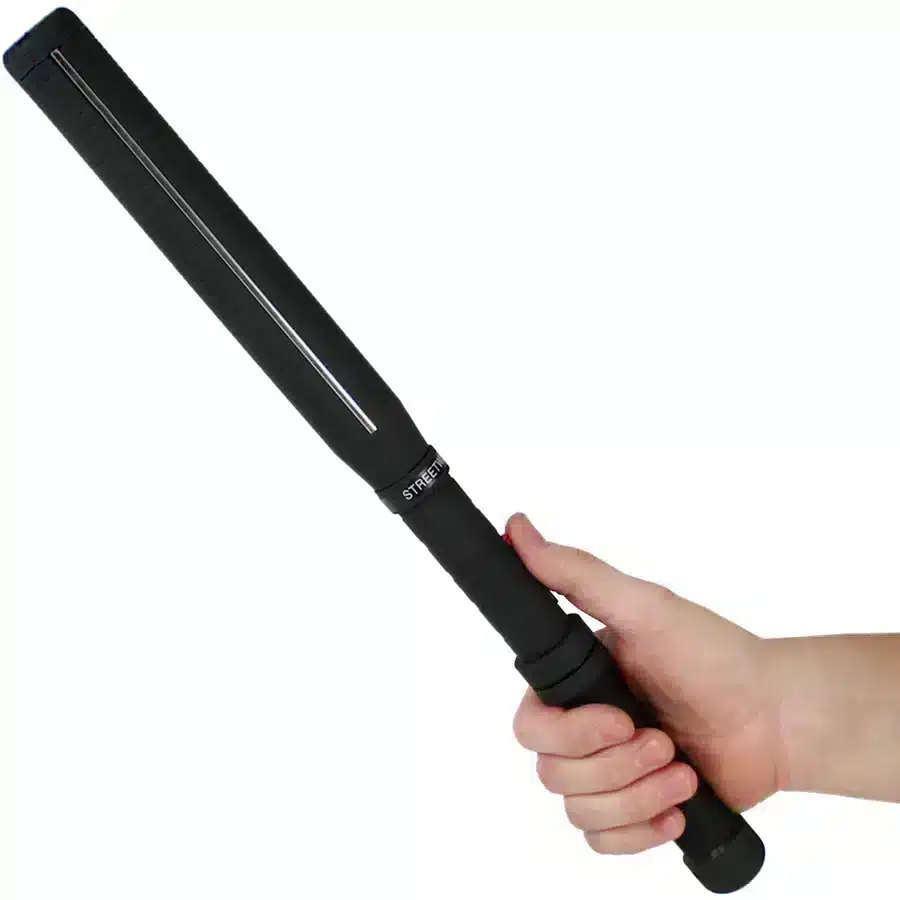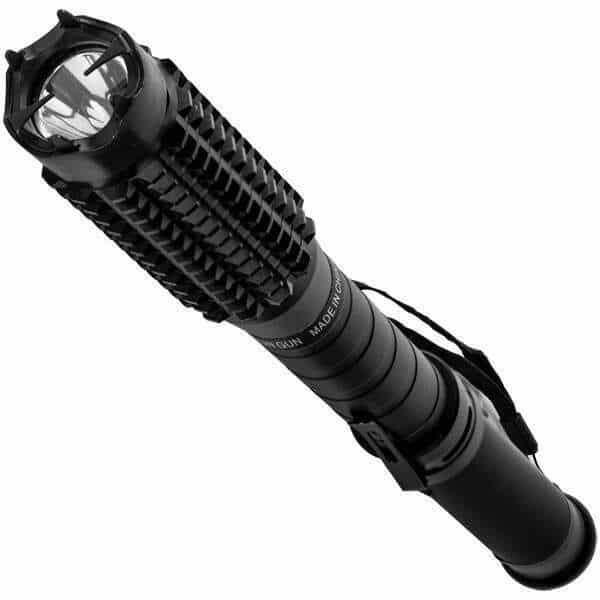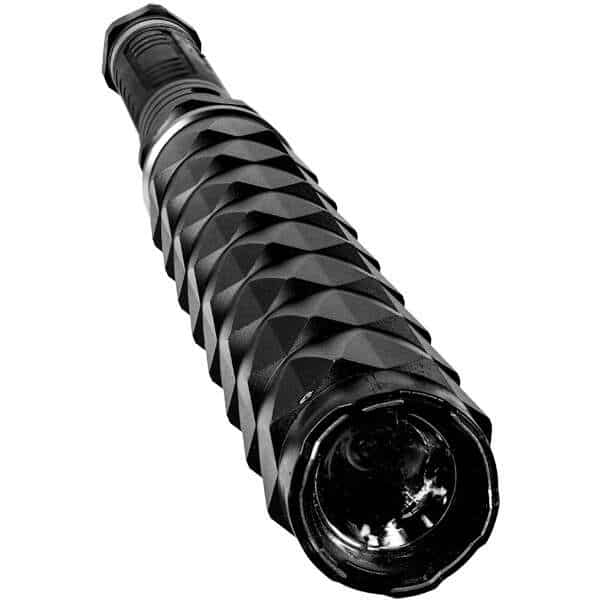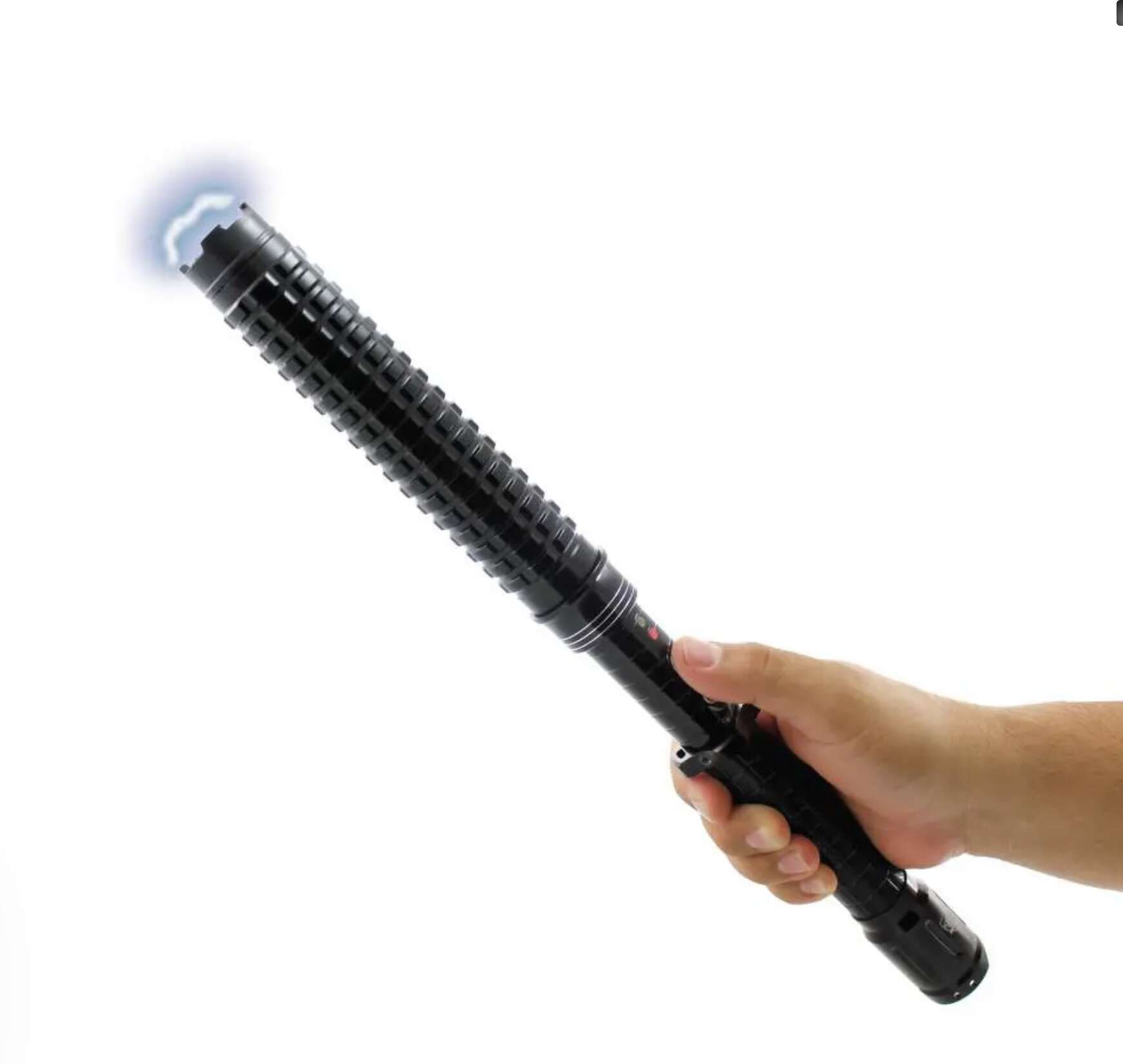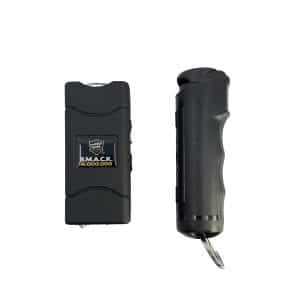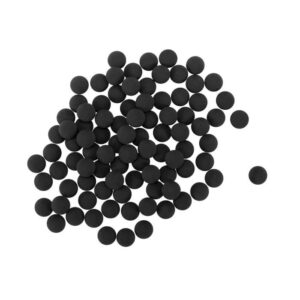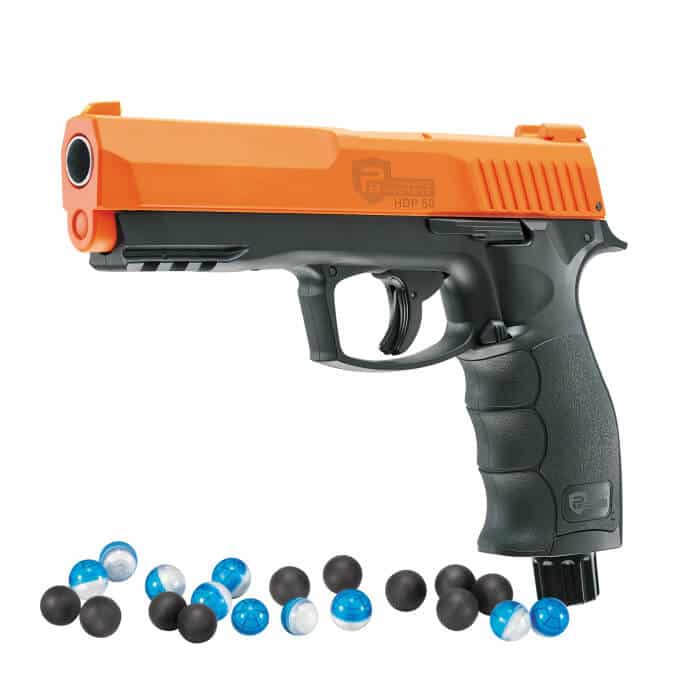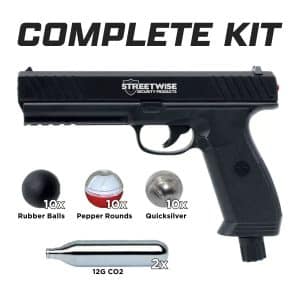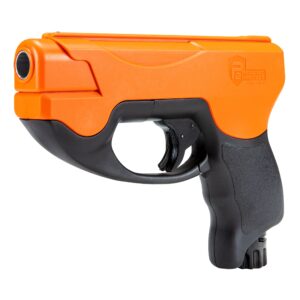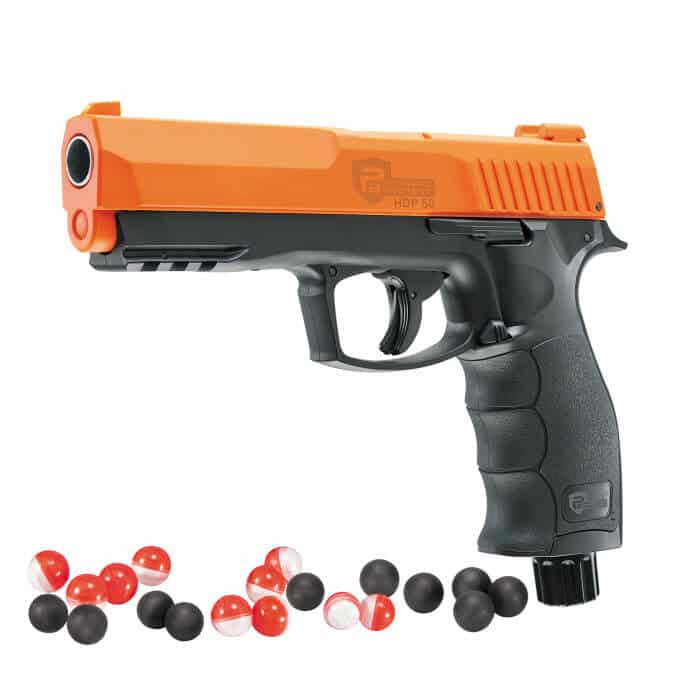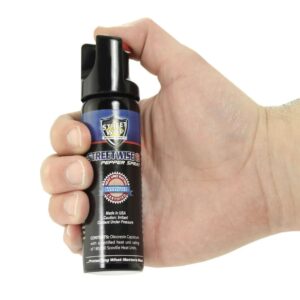In today’s world, personal safety is a paramount concern. With the rise in urban crime and the ever-present threat of unforeseen danger, equipping oneself with a self-defense tool has become a necessity for many. However, the dilemma often lies in choosing the right tool. This article aims to compare and contrast two popular self-defense tools: the stun baton and pepper spray, helping you make an informed decision about which is best suited to your needs.
What is a Stun Baton?
A stun baton is an electroshock weapon designed to incapacitate an assailant through a high-voltage, low-current electrical charge. Available in various sizes and designs, these devices deliver a painful shock upon contact, disrupting muscle functions temporarily without causing serious injury. They are favored by many for their physical deterrence and non-lethal approach to self-defense.
Stun batons are a notable option in the realm of personal defense tools. Below are the key aspects of stun batons, presented in bullet points along with relevant statistics:
-
Operational Mechanism:
- Functions as an electroshock weapon.
- Delivers a high-voltage, low-current electrical charge to incapacitate an assailant.
-
Effectiveness and Impact:
- Causes temporary muscle function disruption and disorientation.
- Non-lethal, ensuring temporary incapacitation without causing permanent injury.
- Studies suggest that the immediate, visible effect of a stun baton can deter potential attackers in many cases.
-
Design and Accessibility:
- Comes in a range of sizes and designs to suit different preferences and needs.
- Typically includes features like an elongated handle for extended reach and enhanced grip for secure handling.
-
Usage and Advantages:
- Requires direct physical contact to deliver the shock.
- Acts as a significant physical deterrent due to its visible and audible shock effects.
- Suitable for situations where close-range defense is necessary.
-
Safety and Legal Considerations:
- Often equipped with safety features to prevent accidental activation.
- Users should be aware of legal restrictions and compliance requirements in their region, as the legality of stun batons varies across different areas.
Stun batons offer a combination of immediate physical deterrence and effective incapacitation, making them a favored choice for many seeking a direct and hands-on approach to self-defense. Their design and operational features cater to those who prioritize a physical barrier between themselves and potential threats.
The primary advantage of a stun baton is its ability to provide a physical barrier between you and an attacker. The electrical shock is not only painful but serves as a significant deterrent. Stun batons are effective at close range, ensuring immediate incapacitation of the assailant. They are also relatively easy to use, with minimal training required.
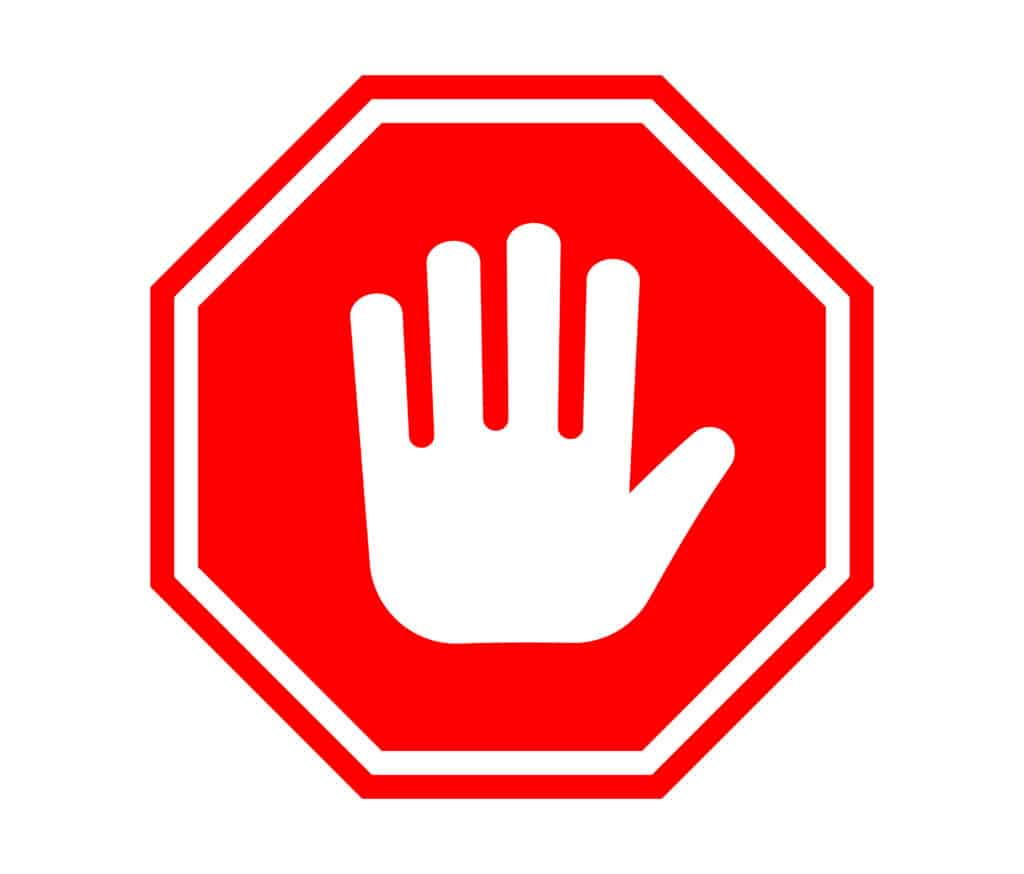
However, stun batons are not without limitations. Their effectiveness is contingent on close physical contact, which can be a disadvantage in a confrontation. There are also legal restrictions surrounding their possession and use in some areas. Additionally, improper handling can lead to accidental injury or misuse.
-
Chemical Composition:
- Contains Oleoresin Capsicum (OC), derived from chili peppers.
- Causes intense irritation to eyes and skin, leading to temporary blindness, pain, and difficulty breathing.
-
Effectiveness:
- The incapacitating effects usually last between 20 minutes to an hour.
- Statistically, pepper spray has a high rate of effectiveness, with some studies indicating a success rate of over 80% in deterring attacks.
-
Range and Deployment:
- Can be effectively used at a distance, typically up to 10-15 feet.
- Aerosol form allows for quick deployment, crucial in sudden attack scenarios.
-
Varieties and Spray Patterns:
- Available in different forms, from compact keychain models to larger canisters.
- Spray patterns include stream, mist, and gel, each suited for specific situations.
- Stream sprays are effective up to 20 feet, ideal for targeted application.
- Mist sprays offer a broader reach, suitable for moving targets.
- Gel sprays stick to the attacker’s face, minimizing airborne particles and offering prolonged effects.
-
Safety and Accessibility:
- Generally equipped with safety features to prevent accidental discharge.
- Requires minimal training, making it accessible for the general public.
Pepper spray’s combination of effectiveness, ease of use, and non-lethal nature makes it a popular choice for personal defense. Its ability to incapacitate an assailant from a safe distance provides a significant advantage, especially in situations where physical confrontation is best avoided.
Pepper spray is renowned for its practical benefits in self-defense situations. Below, the key advantages are highlighted with bullet points, providing a clear understanding of its effectiveness:
-
Ease of Use:
- Simple operation allows for quick deployment in emergency situations.
- Minimal training required to use effectively.
-
Immediate Impact:
- Rapidly incapacitates an assailant, affecting eyesight and breathing.
- Effects are immediate, providing crucial seconds for escape or seeking help.
-
Use from a Distance:
- Can be effectively deployed from several feet away, typically 10-15 feet.
- Allows for maintaining a safe distance from the attacker, reducing the risk of physical harm.
-
Portability and Concealment:
- Compact design makes it easy to carry daily in a purse, pocket, or keychain.
- Discreet appearance enables it to be carried without drawing attention.
-
Non-Lethal Nature:
- Provides a self-defense option that is non-lethal but highly effective.
- Suitable for users who prefer a less aggressive form of personal protection.
These attributes make pepper spray a popular and reliable choice for self-defense, especially for individuals seeking a straightforward, non-confrontational tool for personal safety. Its accessibility and immediate effects are particularly advantageous for those without extensive self-defense training.
| Statistic | Details |
|---|---|
| Effectiveness Rate | Over 80% effectiveness in deterring attacks. |
| Range | Effective up to 10-15 feet. |
| Injury Reduction | Significant decrease in injuries to police officers and suspects after introduction. |
| Excessive Force Complaints | Declined after introduction of pepper spray. |
| Contribution to Deaths | In two of 63 in-custody deaths, pepper spray was a contributing factor (both cases involved asthma). |
| Source: National Institute of Justice | |
While pepper spray is a popular self-defense tool, it has certain limitations that users need to be aware of. These limitations are outlined below with bullet points for clarity:
-
Environmental Susceptibility:
- Wind Sensitivity: The effectiveness of pepper spray can be compromised in windy conditions, as the wind may redirect the spray, reducing its impact on the target or even causing blowback towards the user.
- Indoor Usage Challenges: In enclosed spaces, the risk of affecting bystanders or the user increases due to the contained area.
-
Risk of Cross-Contamination:
- Self-Contamination: There’s a risk of the user getting affected, especially if the spray is used against the wind or in close quarters.
- Bystander Exposure: Innocent bystanders can be inadvertently exposed to the spray, especially in crowded areas or confined spaces.
-
Legal and Regulatory Restrictions:
- Varying Legal Status: The legality of carrying and using pepper spray varies significantly across different regions and countries. In some places, it is considered a prohibited weapon, while in others, it’s legal but with restrictions on strength or quantity.
- Age and Permit Requirements: Certain jurisdictions may have age restrictions or require permits for carrying pepper spray.
-
Training and Familiarity:
- Need for Proper Training: Effective use of pepper spray requires some level of training and familiarity, especially in stress-induced situations.
- Limited Range and Accuracy: The effective range of pepper spray is limited, and accuracy can be a concern, particularly for those who are untrained in its use.
Understanding these limitations is crucial for anyone considering pepper spray as a self-defense tool. It’s important to be aware of and prepared for these potential issues to use pepper spray effectively and responsibly.
When comparing stun batons and pepper spray, several factors come into play. Stun batons require close proximity for effectiveness, which might not be ideal in all situations. On the other hand, pepper spray offers the advantage of distance, allowing you to incapacitate an attacker from several feet away. However, the accuracy and environmental factors can affect its performance.
In terms of portability, both tools are generally compact and easy to carry. However, pepper sprays are often more discreet and can be concealed more easily than stun batons. The legal implications of carrying and using each tool also differ significantly across regions, so it’s crucial to be aware of local laws and regulations.
| Feature | Stun Baton | Pepper Spray |
|---|---|---|
| Mechanism | Electroshock weapon delivering high-voltage, low-current electrical charge | Aerosol spray containing Oleoresin Capsicum (OC), derived from chili peppers |
| Effective Range | Direct contact required | 10-15 feet (depending on spray type) |
| Legal Restrictions | Varies by region, often more restricted | Legal in most places but with varying restrictions on strength and quantity |
| Training Required | Minimal, but proper handling and safety awareness are crucial | Minimal, but training improves effectiveness and reduces risk of self-contamination |
| Sources: National Institute of Justice – Conducted Energy Devices, National Institute of Justice – Pepper Spray Study | ||
Selecting the right self-defense tool is a personal decision that depends on various factors. Consider your physical ability, the environments you frequent, and your comfort level with each device. It’s essential to weigh the pros and cons of each tool in the context of your lifestyle and needs. Remember, having a self-defense tool requires a sense of responsibility and, ideally, some training.
Regardless of your choice, proper training and knowledge are vital. Understanding how to use your chosen tool effectively and safely can make a significant difference in a critical situation. Regular practice and familiarization with the tool’s mechanism are recommended. Always adhere to safety precautions to prevent accidental harm to yourself or others.
Selecting a self-defense tool like a stun baton or pepper spray is only the first step; knowing how to use it effectively and safely is crucial. Here are expanded details on training and usage tips for these tools:
-
Understanding the Tool:
- Familiarize with the Mechanism: Spend time understanding how your tool works. For stun batons, know how to activate and deactivate it. For pepper spray, learn how to unlock and spray it.
- Read the Manual: Always read the manufacturer’s instructions carefully. This can provide crucial information about the tool’s capabilities and limitations.
-
Regular Practice:
- Mock Drills: Practice using the tool in a controlled environment. This can include aiming and deploying the tool without actually activating it (especially important for pepper spray).
- Stay Prepared: Regularly check the tool to ensure it is in working condition. For pepper spray, check the expiration date and test the spray mechanism monthly.
-
Safety Precautions:
- Be Aware of Surroundings: When carrying the tool, be conscious of your surroundings. Avoid deploying the tool in crowded places to prevent harming bystanders.
- Safe Storage: Store the tool in a safe, easily accessible place. Ensure it is out of reach of children or unauthorized individuals.
-
Legal Compliance and Ethical Use:
- Know the Law: Be aware of the legal implications of using your self-defense tool in your area. Ensure you comply with local laws regarding carrying and using these tools.
- Use Ethically: Remember that these tools are for self-defense. Use them only in situations where you feel threatened or in danger.
-
Seek Professional Training:
- Attend Workshops: Consider attending self-defense workshops where you can receive hands-on training.
- Learn from Experts: Professionals can provide valuable tips and scenarios that you might not have considered.
-
Mental Preparedness:
- Assess Situations: Learn to assess situations quickly and determine the appropriate response. Not every threat requires the use of a self-defense tool.
- Stay Calm: In a threatening situation, try to remain calm. Panic can lead to poor decision-making.
-
After Use:
- Report to Authorities: If you ever need to use your self-defense tool, report the incident to the authorities immediately.
- Seek Legal Advice: In case of any legal implications, consult with a legal professional to understand your rights and responsibilities.
By following these tips and regularly training with your self-defense tool, you can enhance your readiness to handle potential threats effectively and responsibly.
In conclusion, both stun batons and pepper spray have their unique advantages and limitations as self-defense tools. Your choice should be based on personal needs, comfort, legal considerations, and environmental factors. Remember, the best self-defense tool is the one that you are comfortable and confident using in a time of need.
-
Is it legal to carry a stun baton or pepper spray in my area?
- The legality varies by location. It’s essential to check local laws before purchasing and carrying these tools.
-
How effective is pepper spray in windy conditions?
- Wind can impact the effectiveness of pepper spray by dispersing it. It’s advisable to use it in a controlled manner and be aware of wind direction.
-
Can stun batons be used through clothing?
- Yes, stun batons can be effective through clothing, although their effectiveness may vary depending on the thickness and type of fabric.
-
Are there any training courses available for using these self-defense tools?
- Many organizations and self-defense instructors offer training courses for both stun batons and pepper spray.
-
What should I do if I accidentally spray myself with pepper spray?
- If exposed to pepper spray, avoid rubbing your eyes, and rinse the affected area with cold water immediately. Seek medical attention if symptoms persist.


